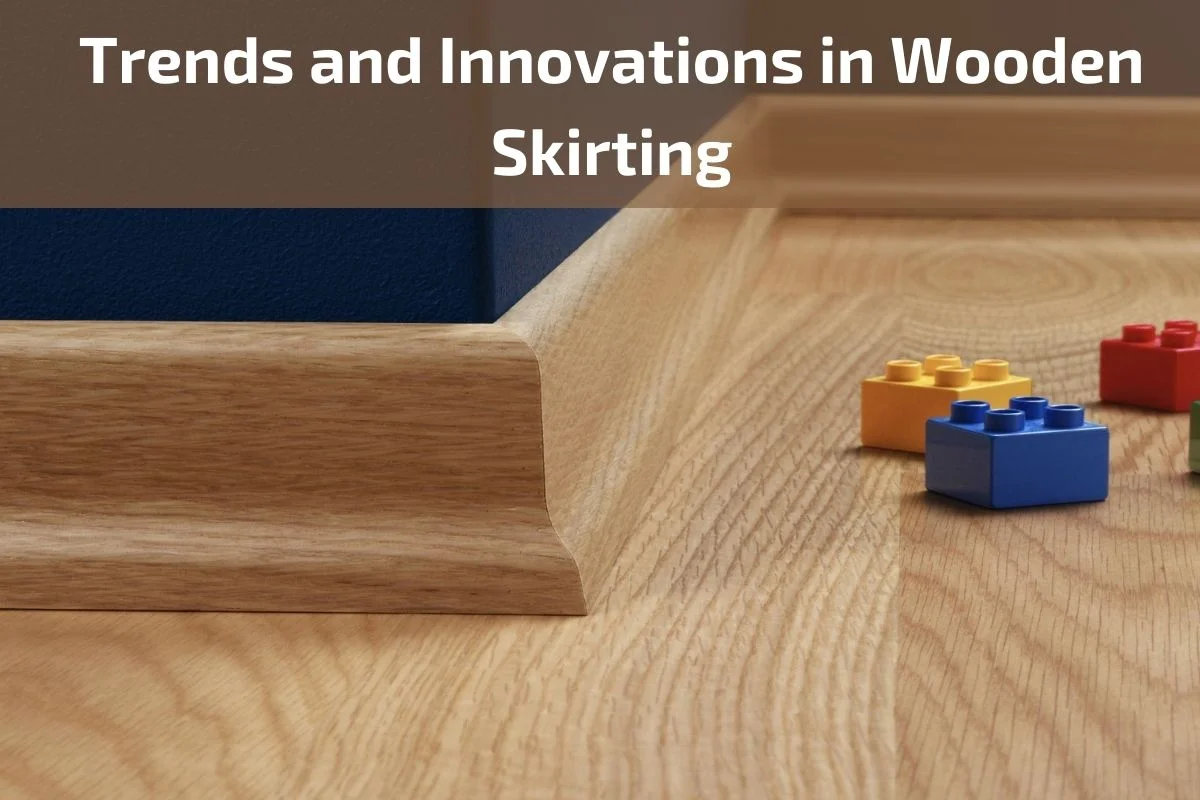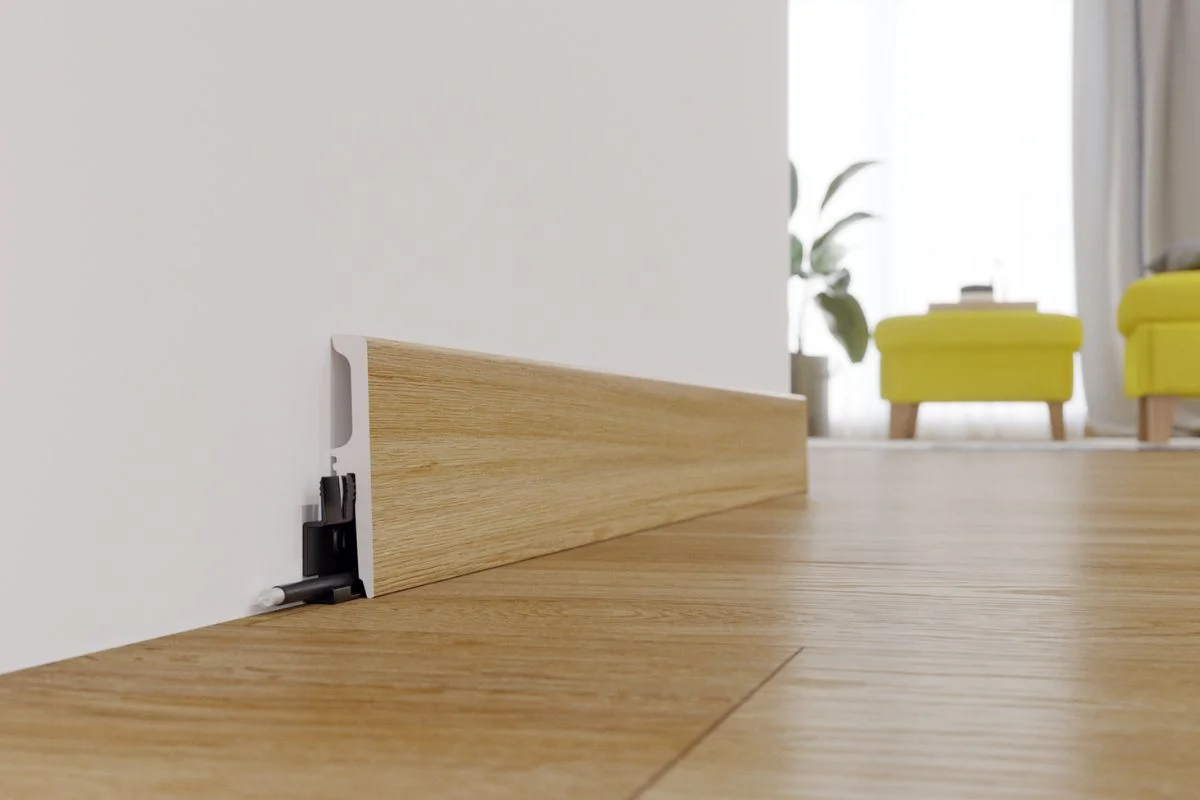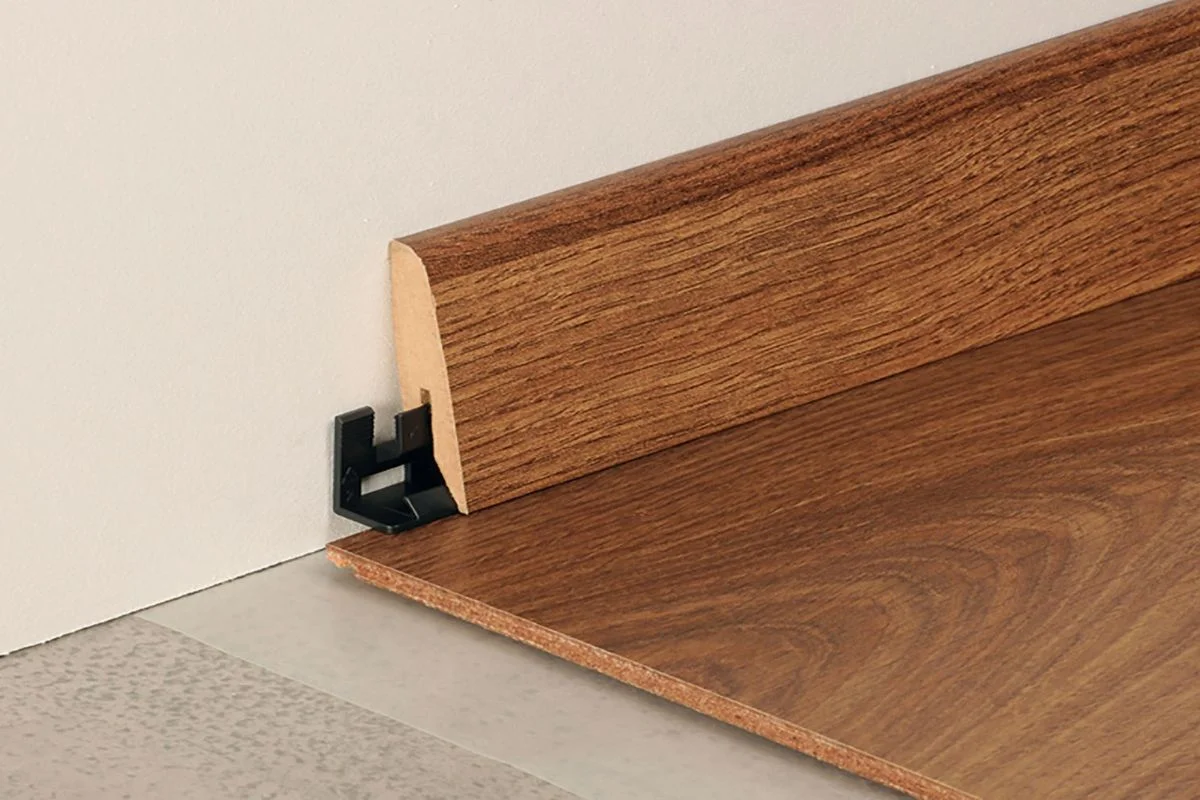
Trends and Innovations in Wooden Skirting
Wooden skirting has long been a staple in interior design, offering both functionality and aesthetic appeal to spaces. As interior design trends evolve and technology advances, so too do the trends and innovations in wooden skirting. This section explores the latest developments in wooden skirting design, installation methods, and materials, providing insight into the innovative ways designers and homeowners are incorporating wooden skirting into modern spaces.
In this introduction, we’ll delve into the growing importance of wooden skirting as a design element, the shift towards sustainable materials, and the emergence of new trends that are reshaping the way we think about skirting boards. Whether you’re renovating an existing space or embarking on a new construction project, staying informed about the latest trends and innovations in wooden skirting can help you create a stylish and functional interior that stands the test of time.
Definition and Purpose of Wooden Skirting
Wooden skirting, also known as baseboard or base molding, is a type of trim installed along the bottom edge of interior walls where they meet the floor. It serves both functional and aesthetic purposes in residential, commercial, and industrial settings.
Definition: Wooden skirting is typically crafted from various types of wood, including pine, oak, maple, and walnut, among others. It comes in a variety of profiles and sizes to accommodate different interior design styles and architectural preferences. Wooden skirting is characterized by its straight or contoured shape, which enhances the visual appeal of interior spaces while providing a finished look to the room.
Purpose:
- Protection: One of the primary purposes of wooden skirting is to protect the bottom portion of walls from damage caused by furniture, vacuum cleaners, foot traffic, and other sources. By creating a barrier between the wall and the floor, wooden skirting helps prevent chips, scratches, and dents, thereby preserving the integrity of the wall surface.
- Concealment: Wooden skirting conceals gaps, cracks, and imperfections along the junction between the wall and the floor, providing a seamless and polished appearance to the room. It covers uneven edges, wiring, and expansion gaps, enhancing the overall aesthetic appeal of the space by creating a cohesive transition between the wall and the floor.
- Aesthetic Enhancement: Beyond its practical function, wooden skirting contributes to the aesthetic appeal of interior design by adding visual interest and architectural detail to rooms. It complements various flooring materials and finishes, such as hardwood, laminate, tile, and carpet, while also serving as a decorative element that enhances the overall ambiance and style of the space.
- Integration of Services: Wooden skirting facilitates the integration of electrical wiring, cables, and plumbing lines within the wall cavity, allowing for discreet installation of utilities without compromising the visual appeal of the room. Concealed channels or ducts within the skirting accommodate wiring and piping, ensuring a clean and uncluttered appearance while maintaining accessibility for maintenance and repairs.
Benefits of Wooden Skirting
Wooden skirting offers a range of benefits that contribute to its popularity and widespread use in interior design and construction projects. From practical advantages to aesthetic enhancements, wooden skirting plays a significant role in enhancing the functionality and visual appeal of interior spaces. Here are some key benefits of wooden skirting:
- Protection: Wooden skirting acts as a protective barrier along the base of walls, safeguarding them against damage from furniture, vacuum cleaners, foot traffic, and other sources. By creating a buffer zone between the wall and the floor, wooden skirting helps prevent chips, scratches, and dents, thereby preserving the integrity of the wall surface and extending its lifespan.
- Concealment: One of the primary functions of wooden skirting is to conceal gaps, cracks, and imperfections along the junction between the wall and the floor. It provides a seamless transition between different surfaces, covering uneven edges, wiring, and expansion gaps to create a polished and cohesive look throughout the room. Wooden skirting enhances the overall aesthetic appeal of interior spaces by masking unsightly elements and creating a sense of continuity in design.
- Aesthetic Enhancement: Wooden skirting adds visual interest and architectural detail to rooms, enhancing their overall ambiance and style. Available in a variety of wood species, finishes, and profiles, wooden skirting complements different interior design themes and flooring materials, ranging from traditional to contemporary. Its natural beauty, warmth, and texture contribute to the overall charm and character of interior spaces, creating a welcoming and inviting atmosphere for occupants and visitors alike.
- Customization: Wooden skirting offers flexibility in design and customization, allowing homeowners, designers, and builders to tailor its size, shape, and finish to suit specific preferences and architectural requirements. Whether opting for a simple, clean-lined profile or a more ornate and decorative style, wooden skirting can be customized to achieve desired aesthetic effects and architectural accents. This versatility enables creative expression and allows for seamless integration with existing decor elements and interior finishes.
- Durability and Longevity: High-quality wooden skirting is known for its durability and resilience, offering long-lasting performance and minimal maintenance requirements. Properly treated and installed, wooden skirting resists warping, swelling, and decay, even in environments prone to moisture or humidity. With routine care and occasional refinishing, wooden skirting can retain its beauty and structural integrity for many years, making it a cost-effective investment in the long-term aesthetics and functionality of interior spaces.
- Warmth and Natural Appeal: Unlike synthetic materials, wooden skirting exudes warmth, authenticity, and natural appeal, infusing interior spaces with a sense of warmth and comfort. The inherent grain patterns, textures, and color variations of wood create visual interest and depth, adding character and charm to rooms. Wooden skirting enhances the overall visual warmth and coziness of interior environments, making them more inviting and conducive to relaxation and social gatherings.
Types of Wood Used in Skirting
Wooden skirting is available in various wood species, each offering distinct characteristics in terms of appearance, durability, and suitability for different interior design styles and applications. The choice of wood for skirting depends on factors such as budget, aesthetic preferences, and environmental considerations. Here are some common types of wood used in skirting:
- Oak: Oak is a popular choice for wooden skirting due to its durability, strength, and timeless appeal. Available in red oak and white oak varieties, oak skirting features prominent grain patterns and natural variations in color, ranging from light tan to medium brown. Oak skirting is known for its resistance to wear and tear, making it suitable for high-traffic areas such as hallways, living rooms, and entryways.
- Pine: Pine is a cost-effective option for wooden skirting, offering a rustic and traditional look to interior spaces. Pine skirting is lightweight and easy to work with, making it ideal for DIY installations and renovation projects. While pine is softer than hardwoods like oak, it can be stained or painted to achieve desired color and finish. Pine skirting adds warmth and character to rooms, particularly in country-style or cottage-inspired interiors.
- Maple: Maple is prized for its hardness, stability, and fine grain, making it a preferred choice for high-quality wooden skirting. Maple skirting features a smooth and uniform appearance, with minimal grain patterns and consistent coloration. It is available in various finishes, including natural, stained, and painted, to complement different design themes and color schemes. Maple skirting offers excellent durability and resistance to dents and scratches, making it suitable for residential and commercial applications.
- Walnut: Walnut skirting adds a touch of sophistication and luxury to interior spaces with its rich, dark brown color and distinctive grain patterns. Walnut is valued for its elegance, durability, and natural beauty, making it a popular choice for upscale homes and designer interiors. Walnut skirting pairs well with hardwood flooring and contemporary furnishings, creating a sense of opulence and refinement in living areas, dining rooms, and master suites.
- Mahogany: Mahogany is prized for its deep, reddish-brown hue, lustrous finish, and exceptional durability, making it a premium choice for wooden skirting in luxury homes and heritage properties. Mahogany skirting features a fine, straight grain and a smooth, polished surface that exudes sophistication and elegance. While mahogany is more expensive than other wood species, its timeless beauty and superior performance justify the investment in high-end interior design projects.
- Cherry: Cherry wood skirting is celebrated for its warm, reddish-brown color and distinctive grain patterns, which deepen and mellow over time. Cherry skirting adds warmth and character to interior spaces, lending a sense of traditional elegance and refinement. Cherry wood is prized for its stability and workability, allowing for intricate detailing and custom designs in skirting profiles. While cherry wood is susceptible to fading in direct sunlight, proper finishing and maintenance can help preserve its natural beauty for years to come
Importance of Wooden Skirting in Interior Design
Wooden skirting plays a crucial role in enhancing the aesthetics, functionality, and overall appeal of interior spaces. While often overlooked, skirting boards serve both practical and decorative purposes, contributing to the visual cohesion and structural integrity of rooms. Here are several reasons highlighting the importance of wooden skirting in interior design:
- Enhanced Aesthetics: Wooden skirting adds a finishing touch to interior spaces, creating a seamless transition between walls and floors. It covers gaps, uneven edges, and unsightly transitions, providing a polished and cohesive look to rooms. Wooden skirting comes in a variety of profiles, finishes, and wood species, allowing for customization to match different architectural styles and design preferences.
- Concealment of Imperfections: Skirting boards conceal imperfections along the base of walls, including uneven surfaces, wall-floor gaps, and wiring channels. By hiding these flaws, wooden skirting contributes to a clean and visually appealing interior environment. It creates a neat and tidy appearance, enhancing the overall presentation of rooms and minimizing the need for extensive wall repairs or modifications.
- Protection of Walls: Wooden skirting acts as a protective barrier along the base of walls, shielding them from damage caused by furniture, foot traffic, and cleaning equipment. It prevents scratches, scuffs, and dents, preserving the integrity of painted or wallpapered surfaces. Wooden skirting also helps reduce the accumulation of dust and dirt along wall bases, making cleaning and maintenance tasks more manageable.
- Integration of Design Elements: Skirting boards provide a platform for integrating various design elements within interior spaces. They serve as a transition between different flooring materials, such as hardwood, tile, carpet, and laminate, creating visual delineation and defining functional zones within rooms. Wooden skirting can also accommodate architectural details, such as recessed lighting, baseboard heaters, and built-in cabinetry, seamlessly blending these features into the overall design scheme.
- Structural Support: Wooden skirting provides structural support to walls and floors, reinforcing their stability and preventing shifting or movement over time. By covering expansion gaps and supporting wall panels, skirting boards help maintain the structural integrity of interior partitions and finishes. They contribute to the longevity and durability of walls and floors, reducing the risk of damage and ensuring a stable foundation for interior elements.
- Versatile Design Options: Wooden skirting offers versatility in design, allowing for customization to suit diverse interior styles and architectural themes. Whether traditional, contemporary, rustic, or minimalist, there are skirting profiles and wood finishes to complement any design scheme. From simple, streamlined profiles to intricate, ornate details, wooden skirting can enhance the character and personality of interior spaces, adding depth and visual interest to room compositions.
- Ease of Installation and Maintenance: Wooden skirting is relatively easy to install and maintain, making it a practical choice for homeowners and designers. Installation typically involves securing skirting boards to walls using adhesive, nails, or screws, followed by finishing treatments such as staining, painting, or varnishing. Once installed, wooden skirting requires minimal upkeep, with routine cleaning and occasional touch-ups to maintain its appearance and condition.
Maintenance and Care for Wooden Skirting
Proper maintenance and care are essential to preserve the beauty, durability, and longevity of wooden skirting in interior spaces. By implementing regular cleaning routines and adopting preventive measures, homeowners can ensure that their wooden skirting remains in optimal condition for years to come. Here are some maintenance tips and care guidelines for wooden skirting:
- Dust Regularly: Dust accumulation can dull the finish and detract from the appearance of wooden skirting. To prevent buildup, dust skirting boards regularly using a soft, dry cloth or a vacuum cleaner with a brush attachment. Pay special attention to crevices, corners, and intricate details where dust may collect.
- Avoid Harsh Cleaners: When cleaning wooden skirting, avoid using harsh chemical cleaners, abrasives, or solvent-based solutions, as these can damage the wood finish and cause discoloration. Instead, use a mild detergent solution diluted in warm water to gently wipe down the skirting boards. Test any cleaning solution on a small, inconspicuous area first to ensure compatibility with the wood finish.
- Protect Against Moisture: Wood is susceptible to moisture damage, which can lead to warping, swelling, and decay. To protect wooden skirting from moisture, avoid excessive humidity levels and direct contact with water sources, such as spills or leaks. Use door mats or rugs near entryways to trap moisture and prevent it from seeping into the wood.
- Inspect for Damage: Periodically inspect wooden skirting for signs of damage, including cracks, chips, or scratches. Address any issues promptly to prevent further deterioration and maintain the structural integrity of the skirting boards. For minor damage, such as surface scratches, use wood filler or touch-up pens to conceal imperfections and restore the appearance of the wood finish.
- Protect Against Sunlight: Prolonged exposure to direct sunlight can cause fading and discoloration of wooden skirting over time. To minimize sun damage, use curtains, blinds, or UV-filtering window treatments to shield interior spaces from harsh sunlight. Rearrange furniture and accessories periodically to distribute light exposure evenly and prevent uneven fading along skirting boards.
- Apply Protective Coatings: Consider applying a protective coating, such as varnish, polyurethane, or wax, to wooden skirting to enhance durability and resistance to wear. Choose a coating that is compatible with the type of wood and finish used in the skirting boards. Follow manufacturer instructions for application and maintenance to ensure optimal protection and longevity.
- Address Humidity Changes: Wood is sensitive to fluctuations in humidity, which can cause expansion and contraction of skirting boards. To minimize the effects of humidity changes, maintain a consistent indoor climate through proper ventilation and temperature control. Use a dehumidifier in humid environments and a humidifier in dry climates to stabilize indoor humidity levels and prevent damage to wooden skirting.
- Trim Around Skirting: To facilitate cleaning and prevent moisture buildup, ensure that flooring materials are installed slightly away from the base of skirting boards. Trim any excess flooring material to create a small gap between the floor surface and the bottom edge of the skirting. This allows for adequate airflow and ventilation along the base of the skirting, reducing the risk of moisture-related issues.
Conclusion
In conclusion, wooden skirting serves as both a functional and aesthetic element in interior design, enhancing the overall look and feel of a space while providing practical benefits. From defining the transition between walls and floors to concealing imperfections and adding architectural detail, wooden skirting plays a crucial role in achieving a polished and cohesive interior aesthetic.




0 comments